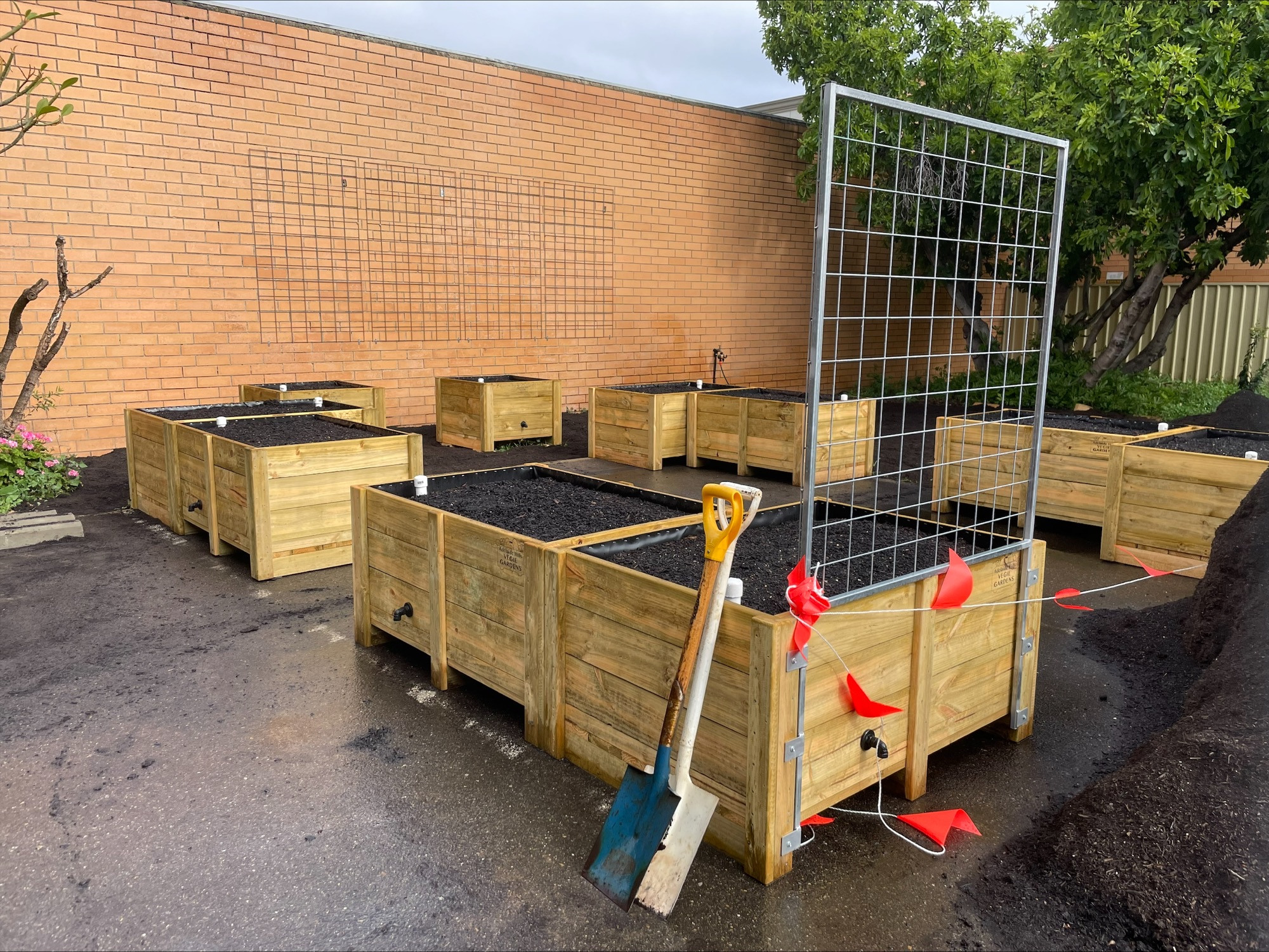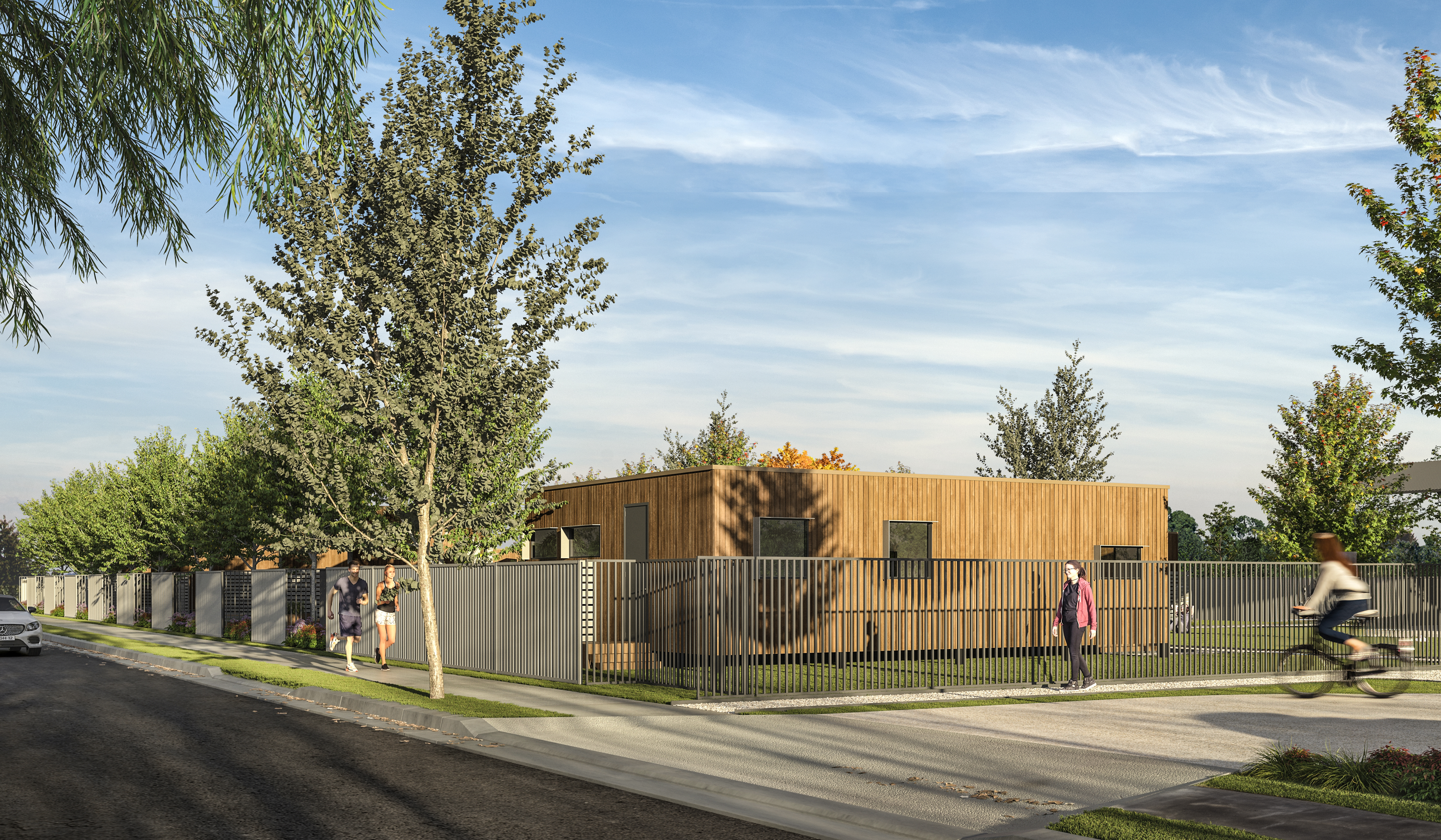Some of our Grassroots Grant recipients are greening spaces and bringing nature connection to those in their care. Check out 3 going the extra mile with it.

The role of nature in care can sometimes be overlooked, but not for these not-for-profits who are recipients of funds in our Grassroots Grants.
Here are 3 service providers who are bringing green, habitat-friendly spaces into their housing programs and crucial support centres to care for South Australians.
AnglicareSA

AnglicareSA gained a Grassroots Grant last year for a project to support the Post Care Pathways program.
The program provides a housing-first option in the inner south-western suburbs that focuses on supporting young care leavers between the age of 18 and 25 years. Playing such an important role in supporting young care leavers, AnglicareSA was deserving of a grant and a little star-power to help boost nature at their facilities.
Providing areas where young people transitioning out of the care system can engage in nature creates areas for potential healing, connection, fun and a sense of community. The initiative aims to bring nature to them by eliminating barriers related to transportation and financial limitations, thus ensuring access to vital opportunities for healing and overall wellbeing.
The team worked on the idea in consultation with the young people who live there. When asked for their input on a green space with the chance to learn about wildlife and growing food, the young people were set on a variety of herbs, vegetables and fruits as well as spaces to sit in nature.
AnglicareSA partnered with Gardening Australia presenter Sophie Thomson, who had voluntarily designed the project, along with Believe Housing Australia and University of Adelaide researchers. The Grassroots Grant is helping them to restore habitat for wildlife, increase tree canopy around the site, create opportunities for hands-on education through garden beds to grow food, and make a communal space for connection and healing.
The grant is helping to deliver workshops on how to grow and cook with fruit, vegetables and native plants, identifying native plants and wildlife, citizen science and mindfulness in nature.
The AnglicareSA team said that without the grant, the project would most likely have been gradual and occurring in smaller stages – meaning there would not be much impact for the young people for quite some time.
The project is coming together with wicking beds installed, and a workshop held recently on growing food.
Pro tip: be prepared to follow the schedule of the soil and the sun – submit your application with the best times to plant things in mind.
Baptist Care SA
Baptist Care SA helps people in a way that respects their agency and dignity. Their food bank lets people pick out groceries themselves, and they invite connection over coffee, a meal or making some art together in the centre’s beautiful courtyard – which is where the Grassroots Grant project was born.

Baptist Care SA has previously done a lot of work to revitalise the courtyard inside the site. The centre and courtyard are tucked in the Millers Court laneway, which is mostly red brick and concrete.
Baptist Care SA Senior Manager Community Pathways Phil Bunyon said a grant will create green tunnels with some established trees in the laneway, to create a better atmosphere for people accessing support services.

‘Over a number of years, we’ve moved from having only a couple of trees and some pot plants to really beautiful gardens in the courtyard,’ Phil said.

‘Over a number of years, we’ve moved from having only a couple of trees and some pot plants to really beautiful gardens in the courtyard,’ Phil said.

‘This means people can sit in those gardens, doing artwork, connecting with each other.’
‘Now, this grant will enable us to build on this work throughout the laneway, and bring it to a really high standard.’
The grant will fund trees in large, durable concrete pots to line the laneway leading up to the site – along with greening along the fencing and around the building walls.
Pro tip: the right placement of planting and green spaces will not only help address the urban heat island effect, but also make your space more inviting.
Junction
In addition to residential care and foster care, social enterprise Junction also offers Supported Independent Living Services to help 16 and 17-year-olds successfully transition out of the care system.
The Tiny Homes Campus is a new housing project helping these young people build their capacity to live independently before they leave the care system at age 18, in a supportive community setting.
To create a welcoming and empowering space for its residents, Junction successfully gained Grassroots Grant funding to include native bush food gardens as part of the campus, which will help the young people connect with nature and culture.
Junction Principal Aboriginal Consultant Kylie Degenhardt said the native plants will be great for supporting sustainability and teaching young people about culture.
‘We want it to be hands on – for anybody to be able to pick their own food,’ she said.
Pro tip: use all the advantages of your green spaces – like using them to teach and learn about nature.
Bonus pro tip: even though we’re no longer funding veggie gardens, native and bushfood gardens are eligible, and there’s no problem with adding self-funded veggie gardens later on!

Have your own idea for an environmental project? Grassroots Grants Round 6 will be open for applications from March to May 2025.